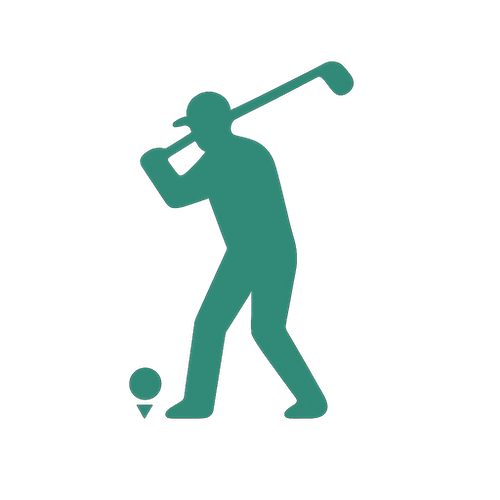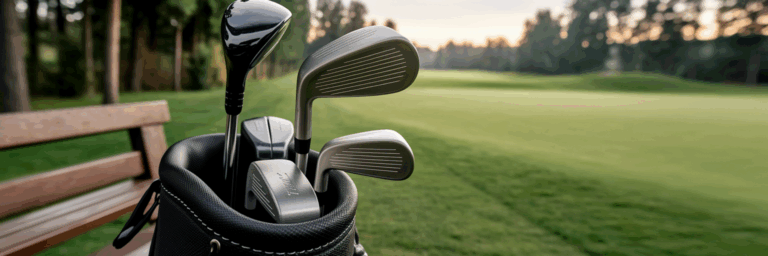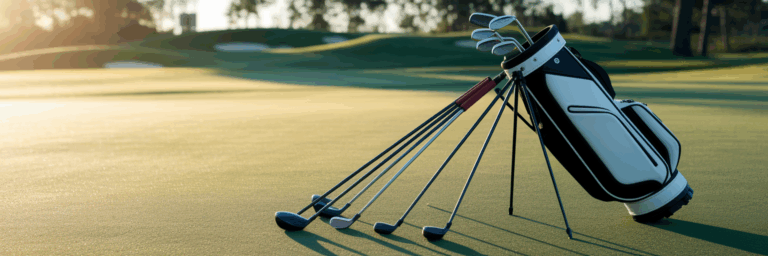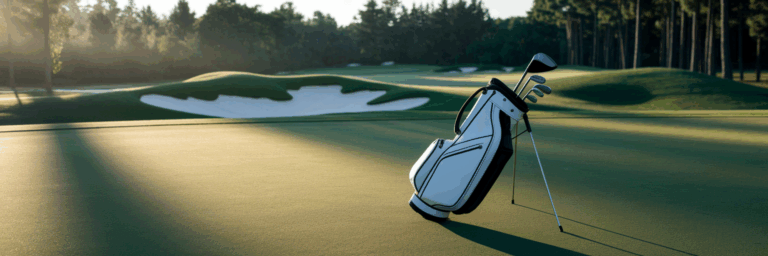Budget Friendly Golf Clubs That Don’t Sacrifice Quality
Starting Your Golf Journey Without Breaking the Bank
The excitement of starting golf is often followed by a moment of hesitation when you see the price tags on equipment. It’s a common feeling. Many new players wonder if they need to spend a fortune just to get started. The good news is, you don’t. High-quality, beginner-friendly clubs are more accessible than ever, and the key is knowing what to look for.
This guide will help you make a smart, affordable first investment in a starter golf set. We believe the right equipment should build your confidence and make learning enjoyable, not drain your bank account. Think of your first clubs as your training wheels. They are designed to help you find your balance and rhythm on the course. Understanding your equipment is a fundamental first step in learning how to play golf, and this guide will show you how to choose wisely.
Key Features to Look for in a Beginner Club Set
When you're looking at beginner golf club sets, the technical descriptions can feel a bit overwhelming. Let's break down the most important features into simple terms. You're not looking for professional-grade specs; you're looking for clubs designed to help you learn and have fun.
- 'Forgiveness' Explained: You will hear this word a lot, and it’s your best friend as a beginner. Forgiveness simply means the club is designed to help you get a decent result even when your swing isn't perfect. This is achieved with features like a large "sweet spot" (the ideal area to hit the ball), cavity-back irons, and perimeter weighting. Imagine it like a wider catcher's mitt; it gives you more room for error, which reduces frustration and helps you build confidence with every swing.
- Essential Club Configuration: A full 14-club bag is overkill for a new player. A good starter golf set includes everything you need and nothing you don't. Look for a basic configuration: a driver, a hybrid or fairway wood, a few key irons (like a 6-iron, 8-iron, and pitching wedge), and a putter. This setup covers all the essential shots without overwhelming you with choices.
- Shaft Materials: You'll generally see two types of shafts: graphite and steel. For most beginners, lighter graphite shafts are the better choice. They can help players with slower swing speeds generate a bit more club speed, which translates to more distance. They are also better at absorbing vibrations, making mishits feel less jarring.
- Game-Improvement Design: The best affordable golf clubs for beginners are specifically engineered to make hitting the ball easier. Their goal is consistency. These clubs help you get the ball in the air more reliably, which is one of the biggest early challenges in golf.
Complete Box Sets vs. Building Your Own
Now that you know what features to look for, the next question is what golf clubs to buy and how to buy them. You have two main paths: buying a complete, all-in-one box set or building your own set by purchasing individual clubs. For a beginner, one option is almost always better.
A complete box set is exactly what it sounds like: a single purchase that includes a driver, woods, hybrids, irons, a putter, and usually a golf bag. These sets are specifically designed for new players. The clubs are engineered to work together, offering consistent feel and performance. This approach removes all the guesswork and is by far the most cost-effective way to get started. It’s a simple, stress-free solution that gets you on the course faster.
The alternative is to build your own set from new or used clubs. While this allows for customization, it’s a path filled with potential pitfalls for a beginner. It requires a deep understanding of club specifications, and you risk creating a mismatched set where the clubs don't feel or perform consistently. It can also quickly become more expensive than a box set. For a new player, the simplicity and value of a complete set are unbeatable.
Comparing Purchase Options for a Starter Set
| Factor | Complete Box Set | Building Your Own Set |
|---|---|---|
| Convenience | All-in-one purchase with bag | Requires individual research and shopping |
| Cost | High value, predictable price | Can become expensive if not careful |
| Club Synergy | Designed to work together | Risk of mismatched clubs and performance gaps |
| Simplicity for Beginners | Ideal; no guesswork needed | Complex; requires significant knowledge |
This table summarizes the key trade-offs between buying a complete set and building one from individual clubs. For beginners, the convenience and guaranteed compatibility of a box set typically outweigh the potential for customization.
Understanding the Clubs in a Quality Starter Set
The best budget golf clubs are found in sets that prioritize ease of use. Let's look at the specific clubs you'll find in a quality starter package and what makes them right for a beginner.
The Driver: Built for Forgiveness
Your driver is built for distance, but for a beginner, control is just as important. A beginner-friendly driver will have a large head (the maximum 460cc size) and a higher loft (10.5 degrees or more). The large head provides a bigger hitting area, making it more forgiving on off-center hits. The higher loft helps you launch the ball higher and straighter, which is a huge confidence booster. As experts at Today's Golfer emphasize, a forgiving driver is essential for helping new players manage inconsistent shots and build confidence off the tee.
The Hybrid: Your Secret Weapon
Think of the hybrid as your secret weapon. This club is designed to replace the long irons (like a 3 or 4-iron), which are notoriously difficult for new players to hit well. With a shape that’s part wood and part iron, a hybrid makes it much easier to get the ball airborne from the fairway or even light rough. It’s a versatile and reliable club that will quickly become a favorite in your bag.
The Irons: Designed for Consistency
The irons in a starter golf set will almost always be "cavity-back" or "game-improvement" irons. This design means some material is scooped out from the back of the clubhead, and that weight is moved to the perimeter. This makes the club more stable on impact, so even if you don't strike the ball perfectly, the club won't twist as much. The result is more consistent distance and direction, which is exactly what you need while learning.
The Putter: For Confidence on the Green
The putter is the most used club in your bag, and a good one inspires confidence. Beginner sets typically include a "mallet" style putter, which has a larger, more stable head. These putters often feature very clear alignment aids, like lines or shapes, that help you aim the clubface squarely at your target. A putter is all about feel, and a well-designed one makes it easier to start your putts on the right line.
Where to Find Your First Set of Clubs
Finding affordable golf clubs is straightforward if you know where to look. For new beginner golf club sets, large sporting goods stores and dedicated golf retailers, both online and in-person, are your best bet. These stores carry reputable brands known for producing excellent value-oriented sets, and you can often see and hold the clubs before you buy.
Buying second-hand is also a great option, but it requires a bit more care. Look for used sets from the last five to seven years to ensure you're still getting the benefits of modern forgiveness technology. When inspecting a used set, check these three things:
- Grips: Make sure they are not cracked, overly worn, or slick. Worn grips are inexpensive to replace but it is an added cost.
- Shafts: Look for any significant dents or rust, which can affect performance and durability.
- Clubfaces: Check that the grooves on the irons are still defined and not worn smooth, as grooves help control the ball's spin.
A word of caution: avoid the temptation of cheap, no-name knock-offs from unverified online sellers. It is far better to invest in a quality, entry-level set from a known brand than a poor-quality imitation that will only lead to frustration. Publications like Golf Monthly regularly review the best budget golf clubs, which can help you identify trusted brands that offer a great balance of price and quality.
Your First Clubs Are a Tool for Enjoyment
Remember, the main goal of your first set of clubs is to help you learn and enjoy the game. They are not meant to be a "forever" set. As your skills develop, you can and should upgrade your equipment piece by piece. This removes the pressure of finding the perfect clubs right away and allows your gear to evolve with your game.
Your first clubs are a tool for discovery, not perfection. They are your ticket to spending time outdoors, learning a new skill, and connecting with friends and family. Having the right affordable gear makes the path to learning how to play golf both accessible and exciting. Now, get out there and enjoy the journey of becoming a golfer.









